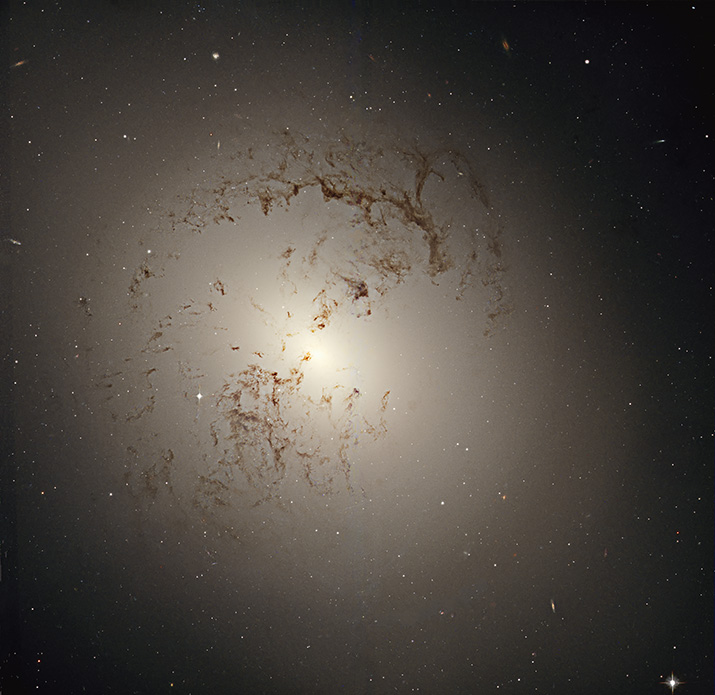
|
Processed June 11, 2013 by Donald Waid Images from the Hubble Legacy Archive Hubble Instrument Used: ACS Filters: Luminance (Detection) Red (F814W) Green (F555W) Blue (F435W) Click on the image below to view at higher resolution. |
|
ARP 154 (NGC 1316) is an elliptical galaxy located in the southern constellation Fornax. It lies on the edge of the Fornax galaxy cluster and is approximately 62 million light-years from the Earth. The galaxy is unusual for an elliptical as it has very prominent dust clouds embedded in its structure. It is thought that the galaxy was formed by the merger of at least two spiral galaxies in the last few billion years. Could this be the fate of our own Milky Way when it merges with Andromeda? (M31) The galaxy is also thought to be evolving in shape and may eventually resemble the Sombrero Galaxy. (M104) There is a super-massive black hole at the center of the galaxy. It is estimated to be as much as 150 million times as massive as our Sun. Studies indicate it is actively consuming gas. Arp 154 is one of the brightest radio sources observed. The active central black hole may be responsible for the radio emissions. The image above was assembled with data obtained from the Hubble Legacy Archive. Three filtered images were used for the red, green and blue channels. These were imaged using filters of F814W for red, F855W for Green and F435W for blue. A detection image, consisting of a combination of the colored filtered images, was used for the luminance channel. The color image was assembled as a standard LRGB image.
1Based on observations made with the NASA/ESA Hubble Space Telescope, and obtained from the Hubble Legacy Archive, which is a collaboration between the Space Telescope Science Institute (STScI/NASA), the Space Telescope European Coordinating Facility (ST-ECF/ESA) and the Canadian Astronomy Data Centre (CADC/NRC/CSA). |
